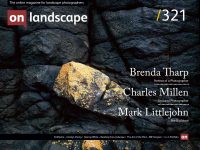The Inverse Image

Murray White
Murray is an enthusiastic photographer of the natural landscape in Australia. His lifelong passion for the analogue process and remote area travelling emerged in the days when colour transparencies were king but has further evolved with the transition to exclusively B&W work. For him, the intimate landscape is a compelling partner when viewed on the ground glass of a large format camera, or observed with more fluidity through a well worn Mamiya 7.
The author of six 4WD guide books and numerous magazine and newspaper articles, Murray has spent the last five years revisiting Australia’s less popular areas with a monochromatic vision, content to satisfy more personal ambitions. He is a regular contributor to BETTER PHOTOGRAPHY magazine and the VIEW CAMERA AUSTRALIA website.
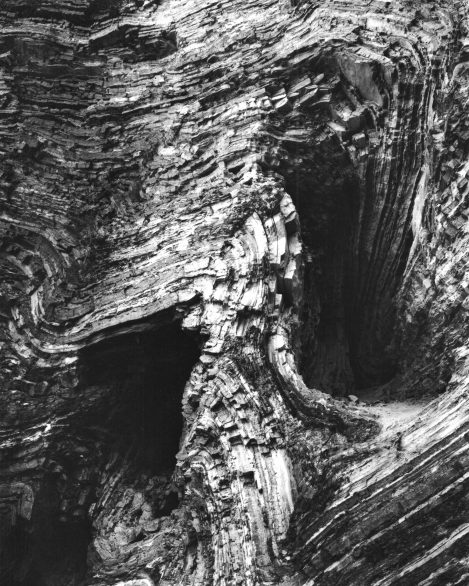
Like growling water grows
into a drowning swell,
this scarp of buckled waves
pound more than they expel.
The screams of molten Earth
blast through ruptured jaws to Hell;
no doubt the horrors beneath,
wreak darkly stories as well.
I’ve long held the regrettable belief that landscape captures of a traditional genre are rarely seen by the non-photographic community as anything more than visual selections – sometimes captivating, even thoughtful selections, but selections made of those largely inanimate objects considered by many to be neutral elements. For the eyes of these viewers journey only to a place and time of presumed authentic origins, where beauty or perhaps darker moods prevail, but little separates this understanding from those intentions (and actions) perceived of the photographer. There may be a feeling of having simply being privy to a view of singular worth, as witnessed by another.
To say that a fleeting pictorial only assessment of that landscape is all that is justified almost certainly devalues a photograph’s true potential, as even the most casual of images evolve from a unique perspective.
Titling an image is one way to draw your viewer away from an otherwise purely visual interpretation and into a mindset where a declared artistic intention brings additional weight. A few well chosen keywords may stimulate our pictorial objectivity and metaphorically rearrange a photograph’s architecture into an alternative understanding. For me, choosing to title a landscape with information other than a location or time has helped both present a parallel understanding to a viewer and, indeed, challenge my own sense of place in relationship to the environment.
In recent years, that familiarity with landscape for me has become more engaging, more intimate, and, I believe, more communicative. Those once descriptive titles have now morphed into increasingly multi-layered phrases and, ultimately, into poetic pairings. Today, I find verse without any titling at all offers a rewarding exchange between the image and its latent meaning – at least to me as the maker. Perhap,s too, a viewer now possessing another perspective will find a passing visual encounter to no longer be conclusive; this interaction must be approached as if a meeting of minds, where involvement is clearly encouraged.
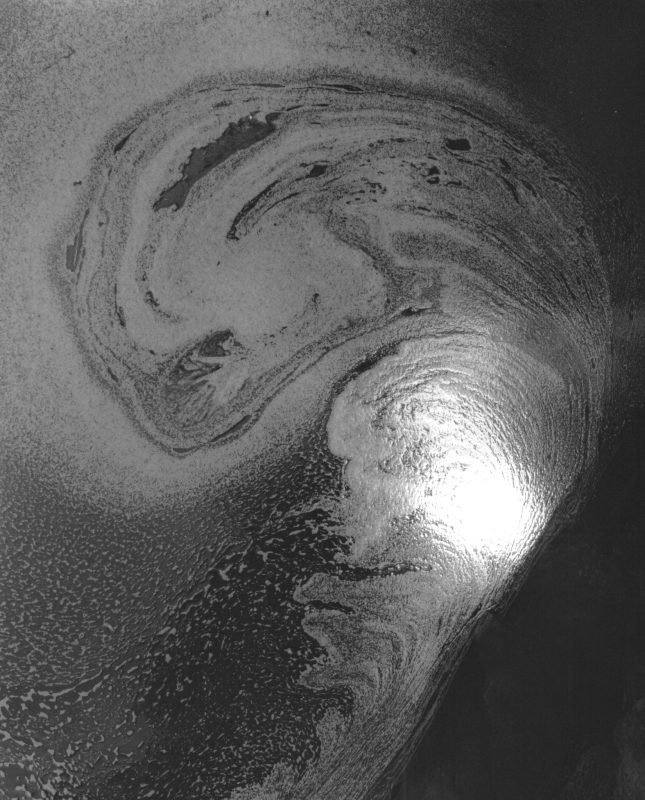
How far away
does space go on
… to astral graves,
where light rays shone?
Or further still,
beyond these tombs.
Where nothing leaves.
But space resumes.
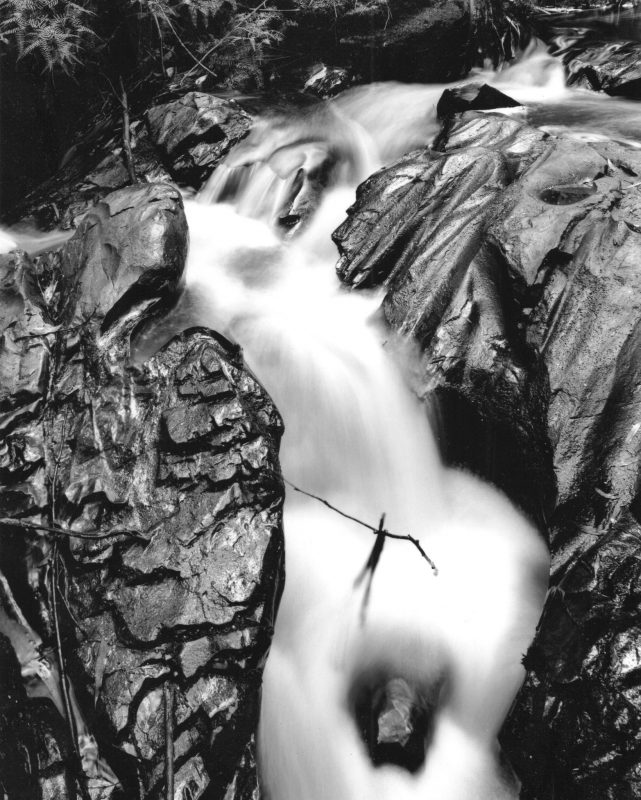
Look first to light
for what is sure,
lest that unseen
doubts what we saw.
But feel the truth
that sight ignores:
when darkness breathes,
our soul explores.
To those visual folk uneasy with a word and image pairing, it is worth mentioning that diptychs and similar photographic mechanisms of association have long served as very effective vectors for viewer interaction. In their simplest form, such pairings provide evidence of visual or emotional similarities (or differences) while more complex examples can explore those conceptual landscapes where the meaning or question may be more nuanced. In either guise, it is the exchange itself that confirms of a deeper link, an idea that the partnership holds more value than the sum of its parts.
A poetic pairing can exhibit these same mutually beneficial qualities. Sympathetic verse blends effortlessly with an appropriate image to either broaden the scope of its understanding or narrow the focus to a specific aspect of the subject. In some instances, both outcomes can be simultaneously true – in my mind, the capacity for an ambiguous pairing to evade description or be different things to different people only amplifies the possibilities for us as the creator.
My eyes are invariably drawn to cryptic subjects and puzzling features, especially those that mimic human behaviours or suggest bodily forms, and I enjoy the holistic flavour that verse can bring to these studies. Anthropomorphic images invite the use of text to further that interpretation or even imply conscious communication.
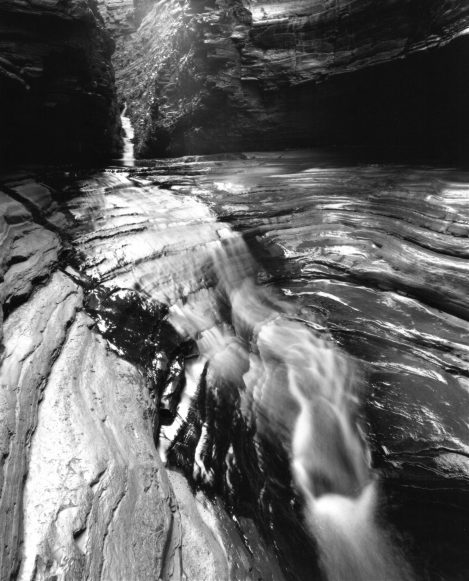
In an underworld of polish,
like an opal cut by trolls,
the weary hone of time
shines its gloss in jagged knolls.
Water skips a starry glint,
on that trickling chime that rolls;
through endless velvet echoes,
so smoothing to our souls.
Using words as a catalyst to extend the artistic merit (both real or projected) of our landscape is no different to any other mechanism we may reach for. But just as alternative processes or dramatic Photoshop editing, for example, are unlikely to transform a mediocre image into a more meaningful print, poetic verse can only pass on that which the photograph is capable of holding. An inadequate image will not be redeemed by poetry alone. And vice versa.
Despite the overlap of this media driven collaboration, the photograph must still provide an engaging visual experience without the aid of verbal direction. Ideally, any words should remain meaningful and uncoupled from the image. (Although it could be argued that as visual layers always exist, they will be self-evident to the viewer; however, words, particularly poetic sequences, are often vague and therefore rely on context for clarification.) Either way, the best work is made when each component is singularly strong, gathering even more power in concert.
In my practice, I have chosen to only use two rhyming quatrains to accompany an uncropped 4X5 format monochromatic image. Somewhat paradoxically, I find the limitations that accompany these self-imposed creative boundaries actually broaden the scope of the pairing. Using only a Mamiya 7 and 4X5 Ebony, I force myself to identify landscape elements compatible with standard silver gelatin paper sizes rather than allow the most obvious subject or compositional framework to dictate how I should treat it. Similarly, by containing my text to a specific length and format, I must explore alternative and unexpected arrangements of verse because I have found that which initially links most conveniently to the image often contributes the least inspiring content.
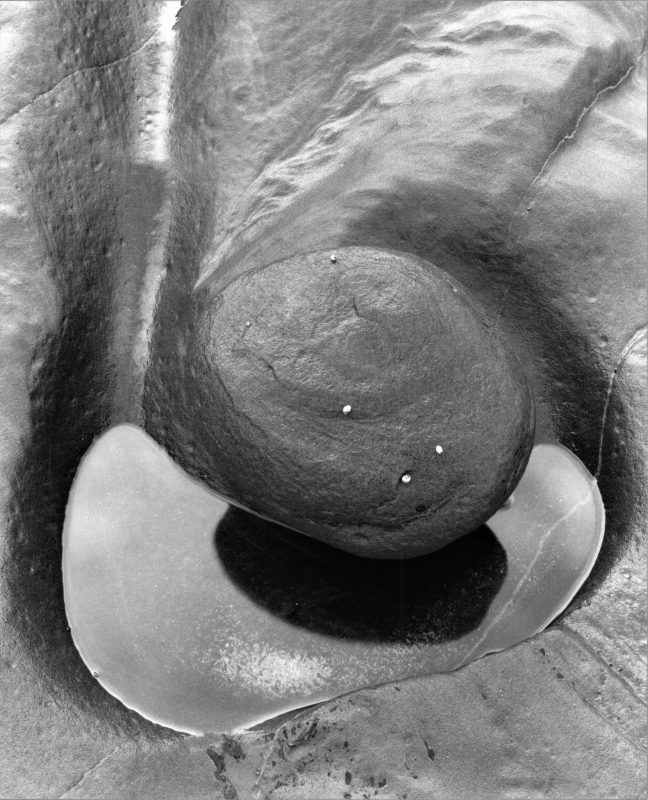
Should belief respond to cues
that vision yearns to see;
to assume that curves must flow,
like roots support a tree?
Or shall form beyond clear sight,
as shadows may promote,
then pose another truth -
or sink what seems to float?
Choosing to follow an instinctive rather than intellectual pathway through an image and its supporting text does not necessarily weaken the veracity of the subject matter either. I remain committed to a faithful reproduction of the natural environment (notwithstanding the B&W capture), but happily respond to those unexpected possibilities that emerge from the visual authenticity.
Indeed, one of the most rewarding aspects of pairing words with photography is being able to explore the visual world as a participant and redefine our own sense of landscape. In many instances, the basic concept and its artistic intention at the time of exposure remain fixed, but the breadth of interpretation, and importantly, those boundaries we may have consciously set, need not restrict a richer understanding of the scene. Perhaps choosing to find words may also find a depth we have not visualised before.
-
Like growling water grows
into a drowning swell,
this scarp of buckled waves
pound more than they expel.
The screams of molten Earth
blast through ruptured jaws to Hell;
no doubt the horrors beneath,
wreak darkly stories as well.
-
How far away
does space go on
… to astral graves,
where light rays shone?
Or further still,
beyond these tombs.
Where nothing leaves.
But space resumes.
-
Look first to light
for what is sure,
lest that unseen
doubts what we saw.
But feel the truth
that sight ignores:
when darkness breathes,
our soul explores.
-
In an underworld of polish,
like an opal cut by trolls,
the weary hone of time
shines its gloss in jagged knolls.
Water skips a starry glint,
on that trickling chime that rolls;
through endless velvet echoes,
so smoothing to our souls.
-
Should belief respond to cues
that vision yearns to see;
to assume that curves must flow,
like roots support a tree?
Or shall form beyond clear sight,
as shadows may promote,
then pose another truth –
or sink what seems to float?
-
When vision cedes to darkness,
(assuming of Nature’s flaws),
that divine jade of cactus
can savagely bare its claws.
But flowers erupt from quills
proffered light by Summer days.
Full blooms now bound like armour
– and those talons reveal bouquets.
-
I paused where time had ended.
There on the beach that day.
It wasn’t clear just when,
or why it chose to stay.
And for moments held so still,
no more did come my way,
but in the rolling march of tide
– this stop… was just delay.
-
Light stirs the mind uncertain,
from water’s gathering glint.
Where inky stains fluoresce
… and time bleeds that hazy tint.
Wave plumes beneath swirl foreign
– more liquid than bubbled air;
of fluid and lyrical thoughts,
that swim to a world elsewhere.
-
Who tastes the blood of Nature
to recoil from soil so sweet?
Or watches pleading echoes
tumble down an empty street?
For neither blowing kisses
nor by proxy should we greet,
but embrace our Earthen pulse,
then surrender to its beat.
-
Can numbers mark the milling wind,
or compare the glare of dew?
Would quieter flame prove love is less
… or just glow a different hue?
Love measures not through size or weight.
Nor scores by arrows Cupid drew.
For the arms of Earthly passion
reach beyond our Earthly view.
-
Does Creation shade its magic,
as a hat may hide a hare?
For that water spun by rock
conjures light from thinnest air!
In truth there is no puzzle;
just a twist to so declare.
No sleight of hand in Nature?
– but eyes may choose to stare.
-
The danger of nothing,
should ambition shun the call,
is certainty of loss,
not fear to scale the wall.
With emptiness ahead
when dreams take in the fall,
what risk can be greater,
than taking none at all?
-
While knowledge writes its pitch
to explain of all things known,
so strength of hope signs on,
to books of text unshown.
For faith invites a vision,
that lecture may not demand
– to understand of our belief:
not believe we understand.
-
What fearsome creatures,
estranged from view.
With dark they conspired,
to crush its curfew.
Any rustle or roar,
stoked visions that grew
– for terror chose night.
But that’s all they knew.
-
For what do we strive
in haste to begin;
could sparkle and want
bring joy without win?
For contentment smiles
on a race well run –
to treasure your dreams,
but live more with none.

